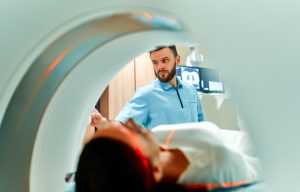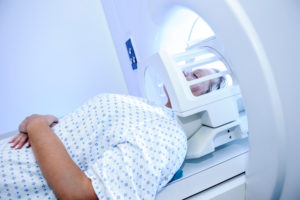Electromyography
At BEST, we understand that muscle weakness and nerve disorders can be debilitating and confusing so it’s critical to begin the process of testing and care.
What is an Electromyography
The electrical activity picked up by the electrodes is then displayed on an oscilloscope (a monitor that displays electrical activity in the form of waves). An audio amplifier is used so the activity can be heard. Muscle electrical activity during rest, slight contraction, and forceful contraction are measured by EMG.
Muscle tissue does not normally produce electrical signals during rest. When an electrode is inserted, a brief period of activity can be seen on the oscilloscope, but after that, no signal should be present.
What to Expect
During the EMG, a neurologist will assess whether there is any spontaneous electrical activity while the muscle is at rest as well as the degree of activity when muscles are slightly contracted. The patient will be given instructions on resting and contracting the muscle at appropriate times. Depending on the muscles being examined, the neurologist may ask you to change positions during the exam. If you have any questions or concerns about the procedure, feel free to discuss them with your neurologist.
Following the EMG, the neurologist will interpret the results and prepare a report. A follow-up appointment will be scheduled with your doctor to discuss the results.
Electromyography at BEST
If you are recommended for an electromyography diagnostics test to check the response of your nerve stimulation of the muscles, BEST can help. If you require further care for neuropathy systems or nerve treatment BEST offers an array of services performed by our board-certified surgeons. Our minimally invasive procedures typically employ an incision that is less than an inch. This allows for a faster recovery, eliminated the need for an overnight hospital stay, and reduces overall risks and complications.
To learn more about what BEST has to offer, feel free to contact us today!
Procedure Doctors
Related Articles
We are BEST Health System
BEST Health System – The Modern Ambulatory Center Offering Advanced Surgical Care BEST Health System is a modern ambulatory center offering advanced surgical care for […]
Your Complete Guide to Medical Imaging
The Importance of Medical Imaging for Diagnostic Purposes Medical imaging plays a pivotal role in modern healthcare, enabling accurate and efficient diagnostics that have the […]
From X-Rays to MRIs - A Guide to Imaging Technology
What is Medical Imaging Technology? Medical imaging refers to the sophisticated technology used to capture internal images of the body’s structures. This is incredibly important […]
What Everyone Needs To Know About MRI Testing
Magnetic resonance imaging or MRI is a non-invasive procedure that provides a high-resolution image of the interior of the body. It is similar to an […]
Everything You Need to Know About X-Rays for Back Pain | BEST
If you’ve turned to a physician for help with your back pain, it is likely that your pain has progressed to the point where it […]
Do I Need a CT Scan for a Back Pain Diagnosis? | BEST
A CT (computed tomography) scan is one of the most commonly used tests for diagnosing back and neck pain. This test is painless, noninvasive, and […]
Do I Need an MRI Scan for a Back Pain Diagnosis? | BEST 
Magnetic resonance imaging, commonly known as an MRI, is one type of scan that can be used for diagnosing back pain. The images produced by […]
Muscle Strain, or More Serious Injury? How To Find Out | BEST
Developing muscle strain is extremely common. In fact, everyone encounters this minor injury at some point or another in their lives. Whether you overdo a […]
Let’s Talk About Laserdisc Compression Procedures | BEST
Laserdisc procedures, or laser disc decompression, is a term that can encompass multiple procedures. Any laser disc decompression uses laser assistance to remove damaged spinal […]








